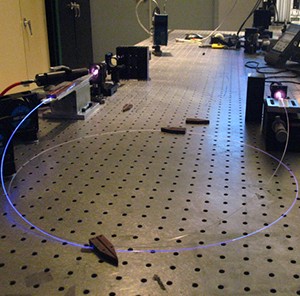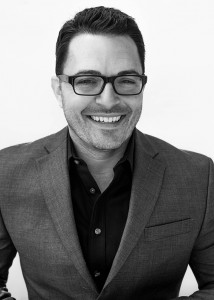Startups, Start Here: An Introduction to University Accelerators – Supporting the Earliest-Stage Ventures
March 16, 2016
Academia and Entrepreneurship: An Innovative Partnership
 The past decade has seen an increase of university investment in programs, staff, and infrastructure to support entrepreneurs of all types and companies at all stages of development. This new wave of interest is part of a broader trend of universities contributing to, and many times taking a leading role in, building sustainable entrepreneurial ecosystems for today’s innovation-driven economy. To this end, universities work in partnership with federal, state, and local economic development organizations and agencies, and with public and private sponsors to create these necessary programs and infrastructure.
The past decade has seen an increase of university investment in programs, staff, and infrastructure to support entrepreneurs of all types and companies at all stages of development. This new wave of interest is part of a broader trend of universities contributing to, and many times taking a leading role in, building sustainable entrepreneurial ecosystems for today’s innovation-driven economy. To this end, universities work in partnership with federal, state, and local economic development organizations and agencies, and with public and private sponsors to create these necessary programs and infrastructure.
These investments range from establishing business incubators to launching accelerators, co-labs, and maker spaces, all of which provide varying degrees of education, coaching, and mentoring to support entrepreneurs.
Accelerators and Business Incubators: An Overview
To help clarify the distinction between accelerators and business incubators, the former supports entrepreneurs that are in the early idea or prototype stage and the latter supports entrepreneurs once a product or service has been defined and the company has been established. Accelerators help ‘accelerate’ ideas to a point where they are ready to secure initial grants and/or early seed investment. They typically have access to databases, financial modeling tools, and other resources that can be useful for market and competitor analysis, financial forecasting, and preparing for investor pitches. Physical office space is often not available in accelerators.
Incubators are a logical next step for startups and early-growth companies, although participation in an accelerator is not required. Incubators are typically a two to five year long program. Companies are chosen through an application process and the selected companies can take advantage of a variety of discounted or free services including leased office space, mentorship, workshops, legal counsel, marketing, and more.
University accelerators are different from private accelerators and can vary in terms of the focus, programs provided, and constituents served. For example, some university accelerators focus exclusively on the commercialization of intellectual property (IP) derived from university research. Some only serve student or alumni ventures, while others serve both university and community entrepreneurs. Some accelerators provide seed-funding in exchange for equity, while others provide their programs at no-charge in support of regional economic development objectives.
UCF: A Leader in Entrepreneurship
As America’s Partnership University™, UCF has a prominent role in investing in the local entrepreneurial ecosystem. The university opened its first business incubator in 1989, an initiative that has grown into what is now known as the UCF Business Incubation Program (UCF BIP) with seven community-supported incubators throughout Central Florida. In 2004, UCF received support from Orange County to add another pillar program to the entrepreneurial community, and launched, what was then known as, the UCF Venture Lab.
The program has expanded and is now known as the UCF Venture Accelerator Lab (VAL). Team members provide Florida researchers and startup companies with coaching services to transform innovations into scalable businesses. Since the doors opened, VAL has served more than 1,000 entrepreneurs through educational programming, market research, workshops, competitions, and access to a network of support organizations and mentors. Support received from the VAL team has enabled clients to raise over $8 million in venture funding, with $2.5 million in SBIR/STTR awards.
To increase the services and opportunities available in the local entrepreneurial ecosystem, VAL staff have led the development, funding, and project management of over $7 million in regional cluster innovation programs from the Department of Energy (DOE), the Economic Development Administration, the Department of Labor, and Space Florida.
Over the next several months, VAL team members will make guest blog appearances to provide more information on the range of programs and services available through UCF VAL and how you can take advantage of them to start and grow your venture.
—
To learn more about VAL’s services, contact the associate director Robin Phelps.
Robin Phelps is a director in the UCF Venture Accelerator Lab, where she actively works with the team on programs that assist researchers, startup ventures, and emerging growth businesses to strategically accelerate their growth in the marketplace. She has more than 25 years of experience in business development, strategy, and as a founding executive in investor-backed technology startup companies. Robin holds a Bachelor’s in Computer Science, a Master’s in Management, and a Ph.D. (ABD) in Public Policy where her research focuses on economic development and the growth of innovation economies.
Expanding Fiber Lasers from Near-IR to Mid-IR is Enabling New Applications for Military and Medical
March 3, 2016
On Thursday, March 10, and Friday, March 11, CREOL, The College of Optics & Photonics will host The 2016 Industrial Affiliates Symposium: Advances in Optics and Photonics. Activities will include short courses, industrial affiliates’ exhibits, technical exhibits, a poster session, lab tours, a reception, technical talks by CREOL faculty, and presentations given by invited distinguished speakers.
One of the short courses on Thursday will be taught by Lawrence (Larry) Shah, Ph.D., research assistant professor at CREOL and profiled in our Faculty Feature this month. His lecture will focus on one of his research topics, fiber lasers. This industry has experienced marked growth, with promise for continued expansion. Research and Markets reports that the global fiber laser market will grow with a CAGR of 16.2 percent between the years of 2014 and 2019.
Fiber lasers are used within a variety of applications including medical, materials processing, marking and engraving, long-haul telecommunications, and directed energy weapons systems. The development of new fiber laser technology requires multidisciplinary basic research initiatives, such as the ones that occur in Shah’s lab.
How Fiber Lasers Work
To create a fiber laser beam, a pump source, usually a diode pump laser, pushes power through a laser cavity. In one scenario, the fiber laser could use refracted glass with striped etchings called Bragg gratings. These reflectors are located on either end of an optical fiber (the laser medium), so that more photons can be generated as the light is refracted and then reflected back and forth. In order for this light to be useful, it needs to be released. The laser beam is emitted through the second Bragg grating, which allows only a small amount of the light out.
Optical fibers are formed from silica glass and usually doped, or treated, with elements such as neodymium, holmium, erbium, thulium, and ytterbium. Ions of these materials are found at the bottom of the periodic table in a group called rare-earth elements or lanthanides. Depending on the dopant ions, these fibers can efficiently carry wavelengths at near-infrared levels, from 790-980nm, which is a subset of the entire near-infrared spectrum. For example, ytterbium-doped fiber lasers operate at 1-micron (1000nm) wavelength and are commonly used in commercial applications. However, Shah is leading basic research efforts to develop fiber lasers that can operate at 2-micron (2000nm) wavelength. The fibers that allow for this increase are a relatively new and cutting-edge innovation.
In addition to the dopants used, the types of fibers also vary based on how they affect the laser beam quality. Gain, or active, fibers, which are used in military applications, primarily alter the light’s brightness, but can also change the light’s wavelength. Passive fibers, most commonly used in telecommunications applications, are optimized to transport light with minimal loss. Optical fibers also come in a variety of lengths, with active fibers generally between 10 cm – 10 m in length, while sections of passive fibers for telecommunications can commonly measure many kilometers.
Fiber Laser Research Questions and Challenges
In terms of output power, active optical fiber performance ultimately depends on the distribution of optical intensity throughout the system. For average power scaling, where a continuous wave (CW) of power is pumped through the optical fiber, performance is fundamentally limited by the heat generated in the gain medium relative to the rate of heat removal and the impact of induced thermal gradients (the rate of temperature change over a distance).
In addition to this heat challenge, Shah’s research also focuses on scaling peak power (which occurs in a short pulse usually between 1-100 nanoseconds) to reach as high as multiple megawatts in the fiber. At such peak powers, the laser fluence and intensity can vaporize most materials (beneficial for weapon systems). At this level of power, it is important to avoid optical damage within the laser system itself.
—
Shah believes that his most important mission is to educate students to translate basic research into applied research. In laser development, this includes proper thermal management of a laser system, maximizing the stability of the testing environment, and accurately detailing a system’s performance. As demand for fiber lasers continues to increase, there is a growing need for those who have experience managing the unique capabilities and challenges associated with optimizing performance aspects of fiber lasers (e.g., power, beam quality, and stability within these systems). Furthermore, the expansion of fiber lasers from the near-infrared towards mid-infrared wavelengths is enabling new applications, particularly in medical and remote sensing, for utilization outside of the laboratory environment.
—
To learn more about Shah’s work in fiber lasers and about potential licensing opportunities, contact John Miner for more information.
Startups Start Here: Interview with Successful Entrepreneur, CEO of Tech Startup, Darren Engle
February 10, 2016
Darren Engle, an entrepreneur and a UCF alumnus, has launched two successful startups. The first, Acudyn, Inc., a research, design, and development corporation that specialized in the advancement of energy and automation technologies, was successfully acquired by FAZ Technology in 2014. Engle’s current company, Multicore Photonics, Inc., develops fiber optic sensors and instrumentation for industrial applications.
Both of Engle’s endeavors have direct connections with UCF. Acudyn, Inc. was a client of UCF’s Business Incubation Program (BIP), where Engle received services such as coaching, access to networking events, as well as education and support in areas such as finance and accounting, intellectual property protection, public relations, and marketing. Multicore Photonics has licensed technology through UCF’s Office of Technology Transfer.
We wanted to talk with Engle about his history with UCF, both as a UCFBIP client and as a licensee. We also discussed his experiences as an entrepreneur. He shares insights below:
How did this process begin for you as an entrepreneur?
I did not feel completely whole working as just an engineer, even though I enjoyed my work. I felt driven to adventure, to design, and to create.
For me personally, it came down to the specious validity of the self-fulfilling prophecy. What I mean is, having a degree in a certain field may not mean you will be satisfied with the career lead by/through that degree. As with everything in life, you have to create your own path.
I find the colloquial proverb “do what you love and the money will follow” to be quite accurate, not only through personal observation but also through personal experience. However, it should be noted that money in this context does not always translate into monetary wealth. It simply means your provisions will be met.
How did you find UCF’s Office of Technology Transfer (OTT)?
The relationship with the OTT was established during the time that Acudyn was a client of the UCF Incubator Technology Program [now UCF BIP]. After the acquisition of Acudyn, I became aware of the optical fiber technology and reached out to the OTT at UCF to find out more about the technology and if it was available for licensing.
What technology did you recently license? At what stage of development is it currently?
The company licensed its namesake technology, multicore fiber (MCF). This technology, developed at UCF College of Optics and Photonics (CREOL) (one of the world’s foremost institutions for research in optics and photonics), proved to be a viable fiber optic technology for sensing applications due to its unique intrinsic sensing capabilities. [Specifically, these sensors can measure conditions such as temperature, pressure, and flow to enable condition-based maintenance (CBM) of industrial resources and facilities through smart sensing.] Numerous journal articles were written by the professors who developed the technology, documenting the attributes and capabilities of the raw fiber.
This fiber technology enabled us to create the first fiber optic sensing platform that can directly compete with sensing platforms historically relegated to electrical-based systems.
Currently MCF has a Technology Readiness Level (TRL) of 6, meaning it has been prototyped and implemented with full-scale, realistic problems. Its Manufacturing Readiness Level (MRL) is 4, meaning it can be capably produced in a laboratory environment.
How was it determined that creating a startup was the best way to get these inventions to the marketplace? Can you walk us through the process of creating a startup company?
Most great ideas/developed technologies never become realized. It’s not because of a lack of merit, but because of a lack of understanding of its place in the commercial world from those who develop it. Just because something has been theoretically proven in the lab does not mean it is commercially viable, nor does it mean that it solves an industry problem. Technology transfer offices exist at universities to act as an intermediary, aligning university technology and commercial partners with the objective of successfully disseminating the technology into the commercial world.
The process [for creating a startup company] varies depending on the technology, application, and [product] placement, but for the most part, it remains consistent. Below is a 5-step approach that I use as a skeleton.
- Research – identify the industry problem, opportunity, and solution
- Secure IP – file or license [a patent, copyright, or trademark]
- Incorporate – S-Corp or LLC
- Structure Business Plan – outline strategy, markets, and customers
- Acquire Capital – organic, VC, or both
What are the three (or more) ingredients for success when it comes to licensing technology from a university?
I believe the following is required when licensing any technology:
- An in-depth knowledge of the industry
- A diversified, dynamic, and experienced management/technical team
- Established relationships with key players in the industry
Was there anything about starting a company that you found to be intriguing, ironic, or surprising?
The unknown can be overwhelming at times, especially when it is uncharted territory. Ironically, no one person knows everything, even those that have “been there and done that,” so to speak. My best advice would be to find a solid mentor that can grow with you. However, it is highly possible that as you progress in your adventure, you will outgrow him or her. So keep this in mind and prepare ahead of time for a transition in mentorship.
How do you see startups using tech developed at a university different from startups not using university-developed tech?
Leveraging university technology is one of the most stable ways to launch a technology-based corporation. It provides a solid foundation to build upon and offers instant credibility. A startup founded on university technology can [more easily] approach an investor or potential customer by leveraging the startup’s connection with the university to establish a known point of trust to further develop.
Without this connection, other startups will have more difficulty approaching investors or potential customers, as their risk is higher. Before trust can be established, a more thorough due diligence and vetting process must be conducted, which results in a longer lead time. This is assuming, of course, that the startup not licensing technology from the university in this example does not already have established connections and/or relationships within the industry of technology applicability.
—
Darren Engle, President and CEO of Multicore Photonics, Inc., former VP of Engineering and Global Services at FAZ Technology, Inc. and prior President and CEO of Acudyn Incorporated, is a serial entrepreneur with extensive experience in starting and developing high-growth businesses. He holds a Masters of Business Administration and a Bachelor of Science in Mechanical Engineering from UCF.

